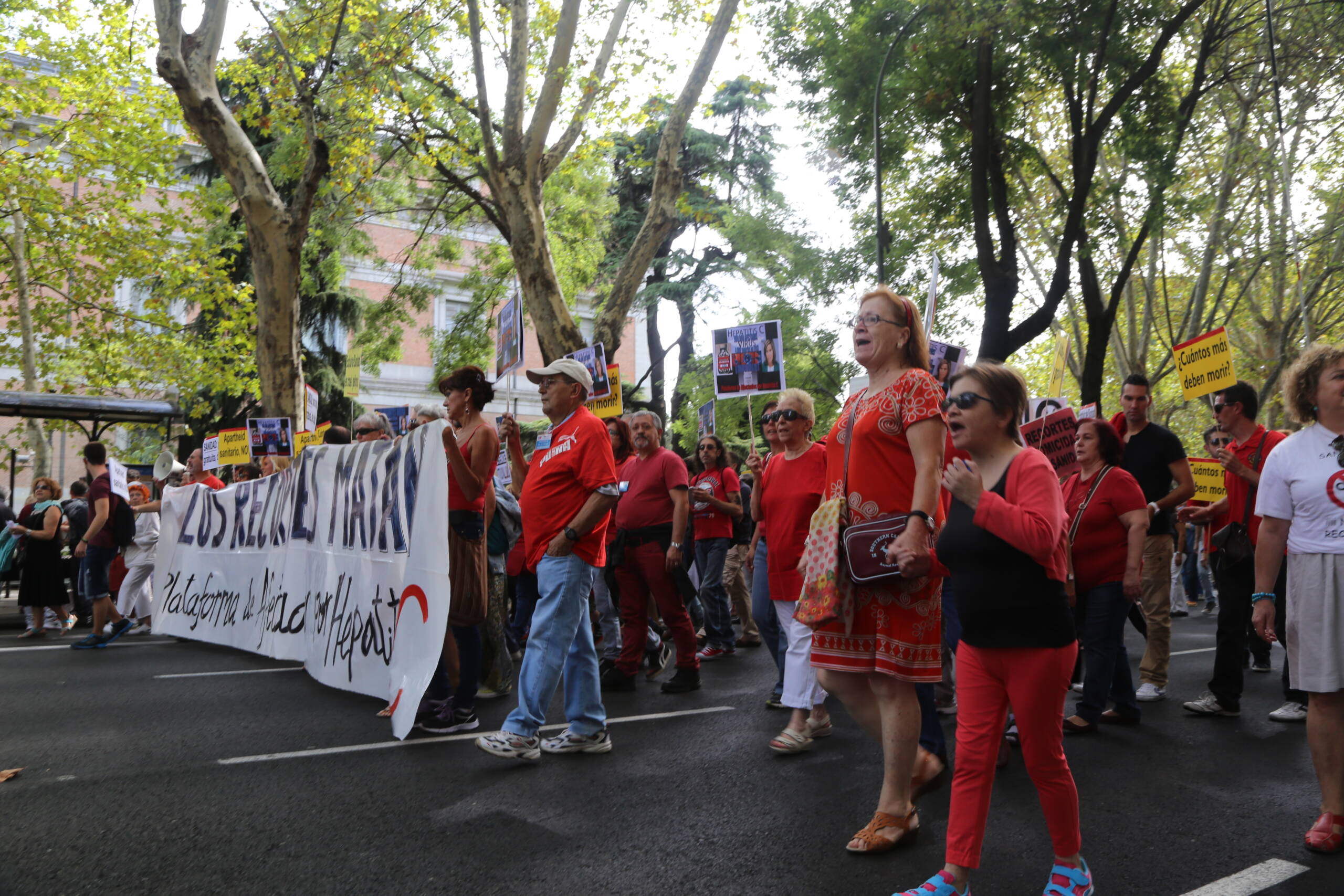On a shaded boulevard in Madrid, the air thickened with chants and the rhythmic beat of feet against the asphalt. A sea of red-clad demonstrators surged forward, their banners unfurled, their voices carrying the weight of indignation. At the front, a stretched white sheet scrawled with bold letters declared the grievances of the day: people demanding recognition, demanding justice, demanding that their suffering no longer be ignored.

Faces of all ages filled the line of march, from elderly protesters gripping signs high above their heads to younger voices shouting with unfiltered urgency. Many carried placards with stark messages and photographs, reminders of lives lost or battles ongoing. The colors of red and yellow dominated the visual language, as if to wrestle with Spain’s own palette of identity—passion, anger, blood, and caution all bleeding together in the midday light.
The atmosphere was not festive but fierce, underscored by anger at promises unkept and policies seen as betrayals. This was not the polished choreography of a state parade, but the raw energy of citizens reclaiming the street. Each chant rose into the plane trees overhead, echoing back against the stone facades of Madrid’s grand buildings, as if demanding an answer from the silent institutions of power tucked behind them.
What unfolded here was not just another protest in the Spanish capital, but a visible reminder that beneath statistics and speeches are lives that feel discarded. Madrid, dressed in red on this day, became the stage for a confrontation between citizens’ lived reality and a government they no longer trust to protect it. The marchers carried more than signs; they carried the voice of discontent that refuses to be ignored.
Leave a Reply